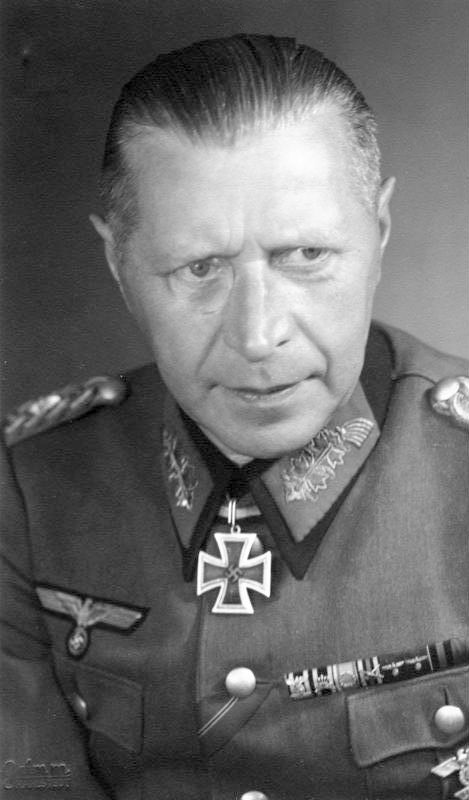Helmuth Weidling was born on 2 November 1891 in Halberstadt and began his military career in the Prussian artillery in 1911. During the First World War, he commanded various Zeppelin units, but later was transferred back as an artillery observer and a battery commander. He occupied various positions in the German artillery units both in the Reichswehr and the Wehrmacht and was later promoted to a divisional and corps commander.
On 22 April 1945, as commander of the LVI. Panzer Corps, he was by error sentenced to death by Hitler. However, after clearing the incident, he was appointed the commander of the Berlin defence area two days later. Approximately 45,000 men under his command consisted of units of various quality and quantity, from a few Waffen-SS and Panzer divisions to smaller Volkssturm, Hitlerjugend and flak assistant units. On 26 April, the Bendlerblock, an old army headquarters, was chosen as a base of operations for Weidling and his staff, since the complex was not far from the Reich Chancellery. Despite presenting various proposals for a breakout, both breakout and surrender were prohibited by Hitler for the next days, until the dictator finally permitted to try a breakout on the night from 30 April to 1 May, a few hours before his suicide. After receiving news about Hitler’s death and visiting the Führerbunker, Weidling assembled his staff in the Bendlerblock and discussed the situation. On 2 May after Joseph Goebbels’ suicide, Weidling arranged a meeting with Marshal Vasily Chuikov, commander of the Soviet 8th Guards Army, who demanded complete capitulation of the Berlin garrison. The surrender order was signed by Weidling and communicated to the remaining German troops in Berlin.
Weidling was taken into custody by the Red Army and transferred to Moscow, where he was intensively interrogated and later sentenced to 25 years imprisonment for war crimes. Helmuth Weidling died from heart failure in the central prison of the city of Vladimir on 17 November 1955 and was buried in an unmarked grave.
